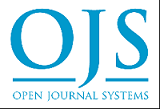The influence of mindfetalness on fetal movement awareness and maternal-fetal attachment
DOI:
https://doi.org/10.33024/hjk.v18i9.754Keywords:
Gerak Janin, Kehamilan, Mindfetalnes, Maternal Fetal AttachmentAbstract
Background: Fetal movement (quickening) is a key indicator of fetal health. The impact of fetal movement being reduced or absent can be associated with an increase in high-risk pregnancies such as premature birth, low birth weight (LBW), and stillbirth. Feeling fetal movement during pregnancy can help the mother have a strong bond with the fetus, and fetal movement can positively affect maternal-fetal attachment. One way to increase awareness of fetal movement and maternal-fetal attachment is with the mindfetalness method.
Purpose: To determine the effect of mindfetalness on fetal motion awareness and maternal-fetal attachment.
Method: Quantitative research with a pre-experimental one group pretest and post-test approach, conducted in November 2022 - June 2023 at the Kaliabang Tengah Health Center Regional Technical Implementation Unit. The sampling technique used purposive sampling and the Slovin formula, the number of samples used was 45 participants. The independent variable in this study was mindfetalness, while the dependent variables were fetal movement and maternal fetal attachment. Univariate and bivariate data analysis of statistical tests used the paired t-test.
Results: Before intervention (pre-test) fetal movement was categorized as high, namely 37 (82.2%), becoming 45 (100%) in the post-test. Before intervention (pre-test) maternal-fetal attachment was categorized as low, namely 5 (11.1%), becoming 2 (4.44%) in the post-test, while before intervention (pre-test) maternal-fetal attachment was categorized as high, namely 40 (88.9%) becoming 43 (95.6%) in the post-test. The p-value of mindfetalness on fetal movement awareness was 0.004, while mindfetalness had no effect on maternal-fetal attachment (p-value = 0.183).
Conclusion: There is an effect of mindfetalness on fetal motion awareness and no effect of mindfetalness on maternal-fetal attachment.
Keywords: Fetal movement; Mindfetalnes; Maternal Fetal Attachment; Pregnancy.
Pendahuluan: Gerakan janin (quickening) merupakan indikator utama kesehatan janin. Dampak dari pergerakan janin yang berkurang atau tidak adanya pergerakan dapat dikaitkan dengan peningkatan risiko tinggi kehamilan seperti kelahiran prematur, berat badan lahir rendah (BBLR), hingga lahir mati (stillbirth). Merasakan gerakan janin pada masa kehamilan dapat membantu ibu memiliki ikatan yang kuat dengan janin dan secara positif gerakan janin dapat memengaruhi maternal-fetal attachment. Salah satu cara untuk meningkatkan kesadaran gerak janin dan maternal-fetal attachment yaitu dengan metode mindfetalness.
Tujuan: Untuk mengetahui pengaruh mindfetalness terhadap kesadaran gerak janin dan maternal-fetal attachment.
Metode: Penelitian kuantitatif menggunakan pendekatan pre-eksperimental one group pre-test and post-test, dilaksanakan pada bulan November 2022 - Juni 2023 di UPTD Puskesmas Kaliabang Tengah. Teknik pengambilan sampel menggunakan purposive sampling dan rumus slovin, jumlah sampel yang digunakan sebanyak 45 partisipan. Variabel independen dalam penelitian ini adalah mindfetalness, sedangkan variabel dependen adalah gerak janin dan maternal fetal attachment. Analisis data univariat dan bivariat uji statistik menggunakan uji paired t-test.
Hasil: Sebelum dilakukan intervensi (pre-test) gerak janin terkategori tinggi sebesar 37 (82.2%), menjadi 45 (100%) pada post-test. Sebelum dilakukan intervensi (pre-test) maternal-fetal attachment terkategori rendah sebanyak 5 (11.1%), menjadi 2 (4.44%) pada post-test, sedangkan sebelum dilakukan intervensi (pre-test) maternal-fetal attachment kategori tinggi sebanyak 40 (88.9%) menjadi 43 (95.6%) pada post-test. P-value mindfetalness terhadap kesadaran gerak janin 0.004, sedangkan tidak ada pengaruh mindfetalness terhadap maternal-fetal attachment (p value = 0.183).
Simpulan: Terdapat pengaruh mindfetalness terhadap kesadaran gerak janin dan tidak ada pengaruh mindfetalness terhadap maternal-fetal attachment.
Kata Kunci: Gerak Janin; Kehamilan; Mindfetalnes; Maternal Fetal Attachment.
References
Akselsson, A., Lindgren, H., Georgsson, S., Pettersson, K., Steineck, G., Skokic, V., & Rådestad, I. (2020). Mindfetalness To Increase Women’s Awareness Of Fetal Movements And Pregnancy Outcomes: A Cluster‐Randomised Controlled Trial Including 39 865 Women. BJOG: An International Journal Of Obstetrics & Gynaecology, 127(7), 829-837.
Andarwulan, S. (2019). Hubungan Tingkat Pendidikan Ibu Hamil Terhadap Frekuensi Pemeriksaan Kehamilan Bpm Gn Maya D. Tambak Sawah: Hubungan Tingkat Pendidikan Ibu Hamil Terhadap Frekuensi Pemeriksaan Kehamilan Bpm Gn Maya D. Tambak Sawah. Embrio, 11(2), 87-93.
Apsari, N. L. D., Juni Antari, N. K. A., Juhanna, I. V., & Adiatmika, I. P. G. (2021). Perbedaan Tingkat Kecemasan Pada Ibu Hamil Trimester Ketiga Yang Mengikuti Prenatal Yoga Dengan Ibu Hamil Trimester Ketiga Yang Tidak Mengikuti Prenatal Yoga Di Kabupaten Gianyar. Majalah Ilmiah Fisioterapi Indonesia, 9(2), 116.
Batubara, R. A., Antira, S. A., Pasaribu, U., & Harahap, H. M. (2023). Hubungan Karakteristik Ibu Hamil Dengan Pengetahuan Tentang Tanda Bahaya Pada Kehamilan Di Wilayah Kerja Puskesmas Batang Pane Ii Kecamatan Halongonan Timur Kabupaten Paluta. Jurnal Kesehatan Ilmiah Indonesia (Indonesian Health Scientific Journal), 8(1), 75-82.
Bradford, B. F., Thompson, J. M., Heazell, A. E., Mccowan, L. M., & Mckinlay, C. J. (2018). Understanding The Associations And Significance Of Fetal Movements In Overweight Or Obese Pregnant Women: A Systematic Review. Acta Obstetricia Et Gynecologica Scandinavica, 97(1), 13-24.
Bradford, B., Cronin, R., Mckinlay, C., Thompson, J., & Mccowan, L. (2020). Maternally Perceived Fetal Movement Patterns: The Influence Of Body Mass Index. Early Human Development, 140, 104922.
Dikmen, H. A., & Çankaya, S. (2018). Maternal Obezitenin Prenatal Bağlanma Üzerine Etkisi. Acıbadem Üniversitesi Sağlık Bilimleri Dergisi, 9(2), 40-45.
Doster, A., Wallwiener, S., Müller, M., Matthies, L. M., Plewniok, K., Feller, S., & Reck, C. (2018). Reliability And Validity Of The German Version Of The Maternal–Fetal Attachment Scale. Archives Of Gynecology And Obstetrics, 297, 1157-1167.
Fatmawati, A., & Gartika, N. (2019). Hubungan Dukungan Sosial Dan Perencanaan Kehamilan Dengan Kejadian Postpartum Blues Pada Ibu Remaja. Jurnal BIMTAS: Jurnal Kebidanan Umtas, 3(2), 44-51.
Flenady, V., Gardener, G., Boyle, F. M., Callander, E., Coory, M., East, C., & Impac Clinical Trials Network For Mothers’ And Babies’ Health. (2019). My Baby’s Movements: A Stepped Wedge Cluster Randomised Controlled Trial To Raise Maternal Awareness Of Fetal Movements During Pregnancy Study Protocol. BMC Pregnancy And Childbirth, 19, 1-11.
Güney, E., & Uçar, T. (2019). Effect Of The Fetal Movement Count On Maternal–Fetal Attachment. Japan Journal Of Nursing Science, 16(1), 71-79.
Husna, R. K. N., Yanti, Y., & Laila, A. (2018). Faktor Yang Berhubungan Dengan Kejadian Depresi Antenatal Pada Ibu Hamil Di Bidan Praktik Mandiri (Bpm) Kota Pekanbaru Tahun 2017. Jurnal Ibu Dan Anak, 6(1), 17-25.
Kantrowitz‐Gordon, I., Cunningham, E., & Reynolds, N. (2019). Measurement Of Maternal Mindful Awareness Of Fetal Movement. Journal Of Midwifery & Women's Health, 64(5), 604-612.
Keskin, G., Gümüşsoy, S., & Yıldırım, G. Ö. (2022). Assessment Of Mental Health Issues In Pregnant Women With Fetal Complications: Relation To Attachment And Anxiety. Perspectives In Psychiatric Care, 58(3).
Kim, B., & Sung, M. H. (2019). Impact Of Anxiety, Social Support, And Taegyo Practice On Maternal-Fetal Attachment In Pregnant Women Having An Abortion. Korean Journal Of Women Health Nursing, 25(2), 182-193.
Lindgren, H., Rådestad, I., Pettersson, K., Skokic, V., & Akselsson, A. (2021). Epidural Use Among Women With Spontaneous Onset Of Labour–An Observational Study Using Data From A Cluster-Randomised Controlled Trial. Midwifery, 103, 103156.
Lung, Y. L., Wardani, D. A., & Kholifah, S. (2021). Hubungan Perencanaan Kehamilan Dan Dukungan Suami Dengan Tingkat Prenatal Distress. Jurnal Keperawatan Wiyata, 2(1), 21-30.
Murgiati, M., Wahyuni, R., Hayati, I., & Risnawati, R. (2023). Hubungan Paritas Dan Usia Kehamilan Dengan Tingkat Depresi Pada Ibu Hamil Di Wilayah Kerja Puskesmas Talisayan. Jurnal Sehat Indonesia (JUSINDO), 5(01), 50-60
Niles, K. M., Blaser, S., Shannon, P., & Chitayat, D. (2019). Fetal Arthrogryposis Multiplex Congenita/Fetal Akinesia Deformation Sequence (FADS)—Aetiology, Diagnosis, And Management. Prenatal Diagnosis, 39(9), 720-731.
Pollock, D., Ziaian, T., Pearson, E., Cooper, M., & Warland, J. (2020). Breaking Through The Silence In Antenatal Care: Fetal Movement And Stillbirth Education. Women And Birth, 33(1), 77-85.
Prihandini, S., & Primana, L. (2019). Faktor-Faktor Yang Memengaruhi Hubungan Kelekatan Ibu Terhadap Janin Dalam Kandungan. Buletin Psikologi, 27(2), 125-135.
Rachmawati, F., Wulandini, P., Febrianita, Y., Sari, R. I., Setiawati, N., Sinuraya, E., & Sastrini, Y. E. (2023). Konsep Dasar Dan Asuhan Keperawatan Maternitas. Penerbit Tahta Media.
Rådestad, I. (2013). Mindfetalness: Det Bästa För Ditt Ofödda Barn. Ingela Rådestad.
Radestad, I., Pettersson, K., Lindgren, H., Skokic, V., & Akselsson, A. (2021). Country Of Birth, Educational Level And Other Predictors Of Seeking Care Due To Decreased Fetal Movements: An Observational Study In Sweden Using Data From A Cluster-Randomised Controlled Trial. BMJ Open, 11(6), E050621.
Rafii, F., Alinejad-Naeini, M., & Peyrovi, H. (2020). Maternal Role Attainment In Mothers With Term Neonate: A Hybrid Concept Analysis. Iranian Journal Of Nursing And Midwifery Research, 25(4), 304-313.
Salehi, K., Kohan, S., & Taleghani, F. (2018). Factors And Interventions Associated With Parental Attachment During Pregnancy In Iran: A Systematic Review. International Journal Of Pediatrics, 6(1), 6823-6842.
Smith, V., Muldoon, K., Brady, V., & Delaney, H. (2021). Assessing Fetal Movements In Pregnancy: A Qualitative Evidence Synthesis Of Women’s Views, Perspectives And Experiences. BMC Pregnancy And Childbirth, 21, 1-14.
Smyth, R. M. D., Taylor, W., Heazell, A. E., Furber, C., Whitworth, M., & Lavender, T. (2016). Women’s And Clinicians Perspectives Of Presentation With Reduced Fetal Movements: A Qualitative Study. BMC Pregnancy And Childbirth, 16, 1-9.
Thompson, J. M., Wilson, J., Bradford, B. F., Li, M., Cronin, R. S., Gordon, A., & Heazell, A. E. (2021). A Better Understanding Of The Association Between Maternal Perception Of Foetal Movements And Late Stillbirth—Findings From An Individual Participant Data Meta-Analysis. BMC Medicine, 19, 1-12.
Downloads
Published
How to Cite
Issue
Section
License
Copyright (c) 2024 Holistik Jurnal Kesehatan

This work is licensed under a Creative Commons Attribution-NonCommercial 4.0 International License.









